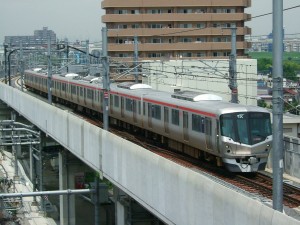The UK Government announced in 2017 the creation of a taskforce to investigate a new way of paying for infrastructure projects, such as new public transport, led by the Ministry of Housing, Communities and Local Government and the Mayor of London’s Office. It also includes HM Treasury, the Department for Transport, TfL as well as London Councils and is looking at the so-called ‘Development Rights Auction Model’ of land value capture.
Major transport investment can significantly increase the value of land, particularly if it is close to a train station or transport hub. Land value capture is a term used to describe the use of this increase in land value to fund investment in public services, such as transport. Japanese local government has significant experience in this area, and recent approaches to land value capture, as well as the tax and planning system are responding to land value creation. This means that investments can generate significant windfall gains for landowners, property owners, developers and early property purchasers, while the costs of the scheme are paid by others.
One such example is a new suburban commuter line, Tsukuba Express, which opened in 2005, and is a 58.3 km, 20-station corridor connecting central Tokyo and Tsukuba northeast of the capital. The Tsukuba Express project cost 949.4 billion yen (£6.5 billion in 2005) to build and was financed as follows: 80 percent from no-interest government loans, 14 percent from local government contributions, and 6 percent from the Fiscal Investment and Loan Program (FILP). Land readjustment was used to assemble considerable rights-of-way to accommodate the Tsukuba Express Line.
Differing from private railway development in Japan, Tsukuba Express’s land readjustment projects have been implemented collectively by various public entities (including the Urban Renaissance Agency, Tokyo Metropolitan Government, prefectures, and municipalities). These public entities assembled and consolidated land parcels, returning portions to the original owners and selling much of the remainder to the Japan Railway Construction Agency (JRCA) at pre-railway prices. After the JRCA completed construction, ownership of the Tsukuba Express Line was transferred to a new railway company established by the public entities. The current stakeholder public entities are the local authorities along the line and remain the shareholders of the new railway company, made up by Ibaraki Prefecture, Tokyo Metropolitan Government, Chiba Prefecture, Adachi Ward (within Tokyo) City of Tsukuba and Saitama Prefecture.
The line traces its origins back to the 1970s when measures were needed in the region north of Tokyo to develop housing and relieve traffic congestion. Enabling legislation consolidating public ownership of railways by local authorities with wide area planning for housing was enacted in 1985. The line was one of a range of new railways which were envisaged in the same era, and the finance model was decided after the experience of other railways, which were also implemented by public entities. The Tsukuba Express line, however, learned lessons from the Toyo Railway, Saitama Express Railway and similar, which all suffered from high-interest burdens and the repayment of construction costs; for the Tsukuba Express line most of construction costs were funded at zero interest from central government loans. Reduction in construction cost, adoption of Automatic Train Operations and one-man operation have also contributed to the long-term cost savings and financial viability of the line.
Local authorities have since worked with the Urban Renaissance Agency, Japan’s central agency for housing on developing the areas around stations, seeing significant development of commercial and residential space of the Land Value Capture strategy, with local authorities using planning and funding to convert the use of land, later reselling the plots back to the owners at cost price, with increased gains covering the costs or railway construction while selling back upon completion enabling further development of the land around new stations. Yashio City in Saitama Prefecture has seen a 10% increase in population in the period 2005-2015, while registering zero population growth in the period 1995-2005. The twenty station areas between Akihabara terminus in central Tokyo and over 50 km away in Tsukuba, north of Tokyo in Ibaraki Prefecture all have ambitious plans for redevelopment, and in Japan where cities outside of the major centres like Tokyo are increasingly facing the various challenges of depopulation, Tsukuba City is now calculating that the population will continue to increase until 2035.
Picture copyright of LERK, via Wikimedia Commons CC2.5 licence


